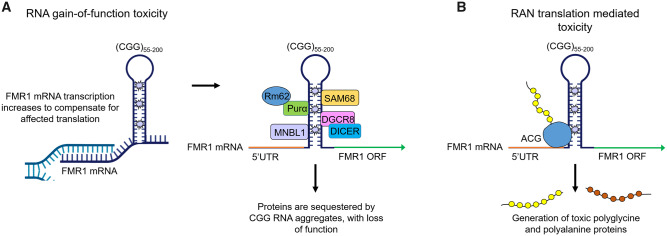Figure 2.
RNA gain-of-function toxicity and RAN translation-mediated toxicity. (A) RNA gain-of-function toxicity. FMR1 transcription increases to compensate for affected translation. Subsequently, premutation CGG repeat lengths form intranuclear aggregates that can sequester RNA binding proteins, inhibiting them from carrying out their normal roles, leading to cell dysfunction. (B) Repeat-associated non-AUG (RAN) translation-mediated toxicity. Translation of FMR1 mRNA is initiated from a near cognate ACG start codon, resulting in the production of polyglycine and/or polyalanine-containing proteins that interfere with normal cell function or might be directly toxic. Figure adapted from Berman et al. (2014).

